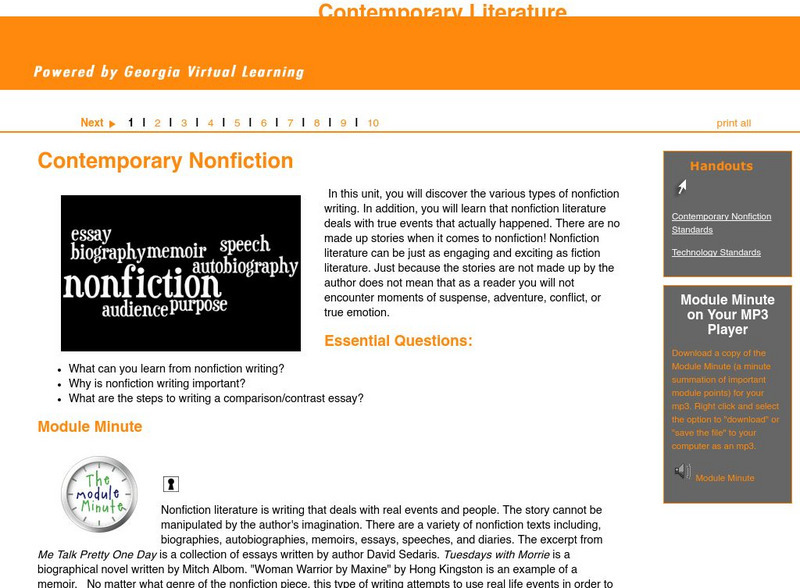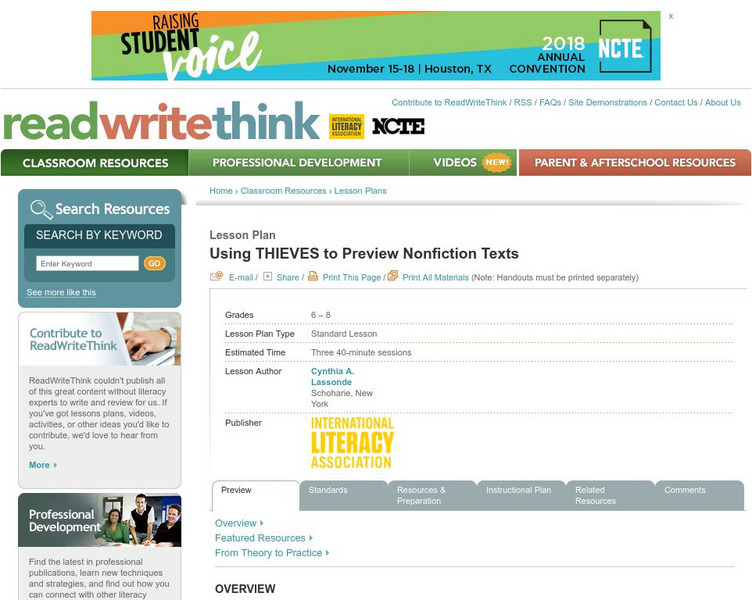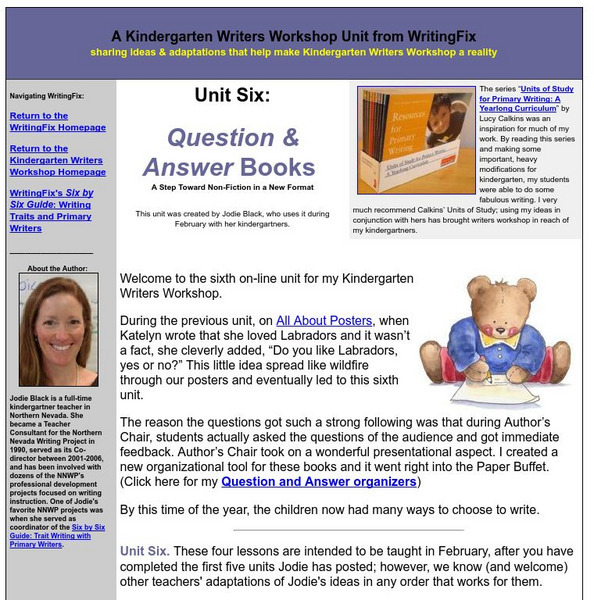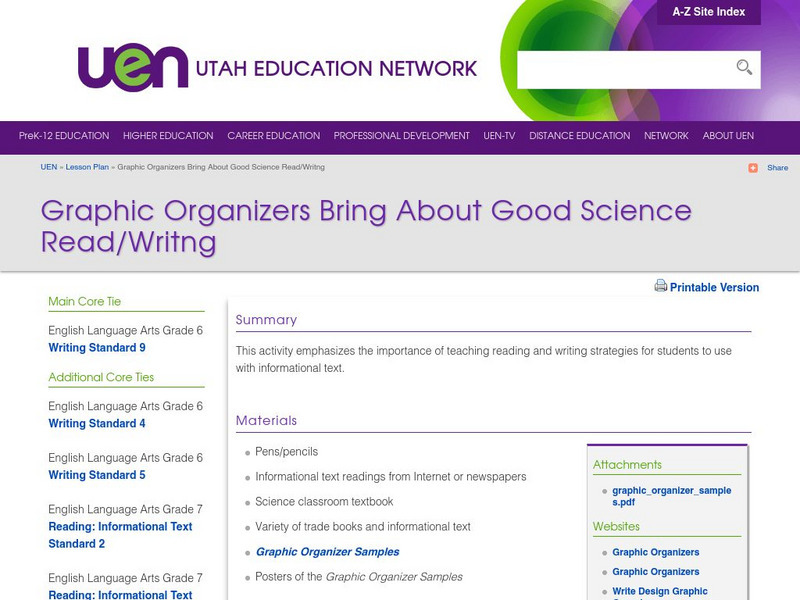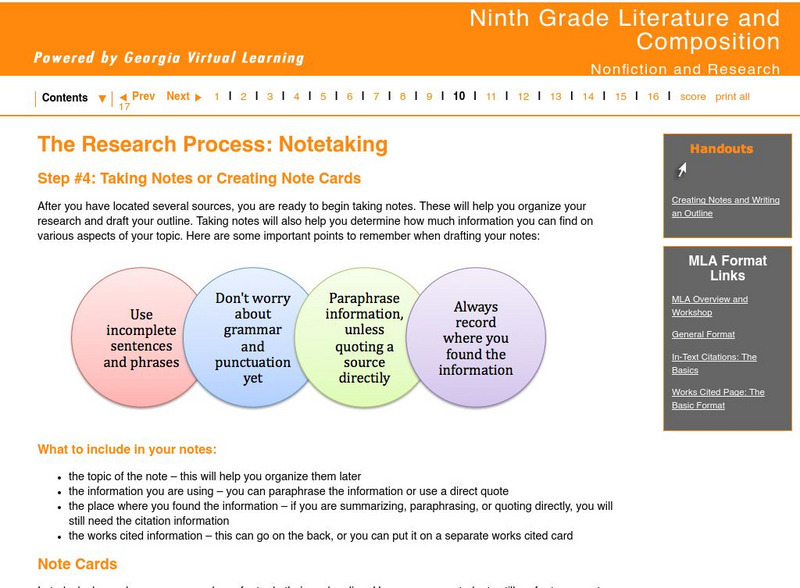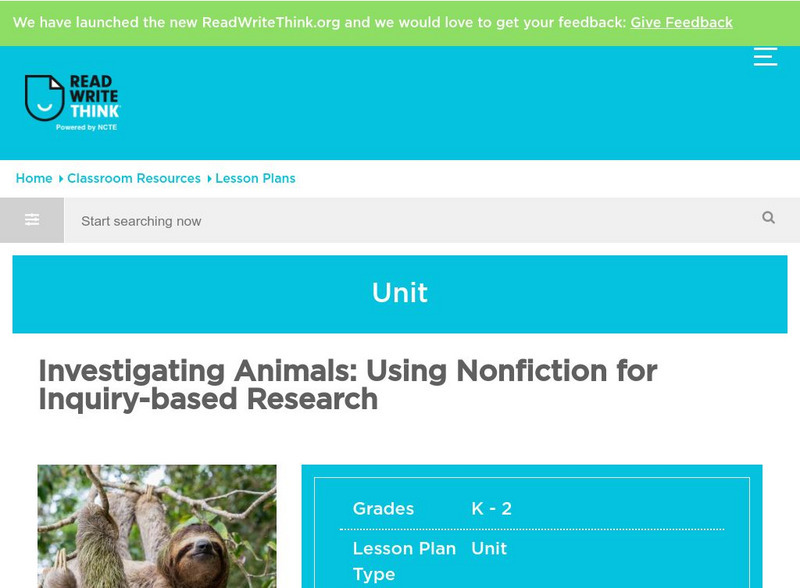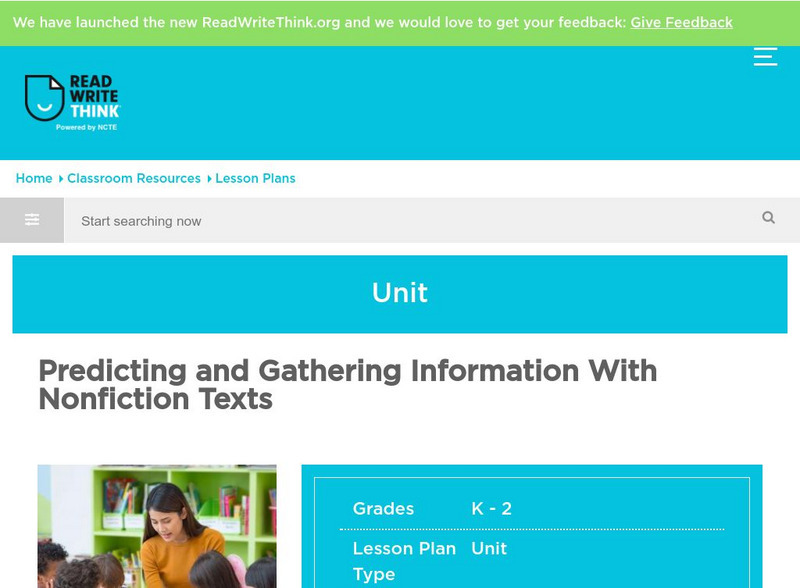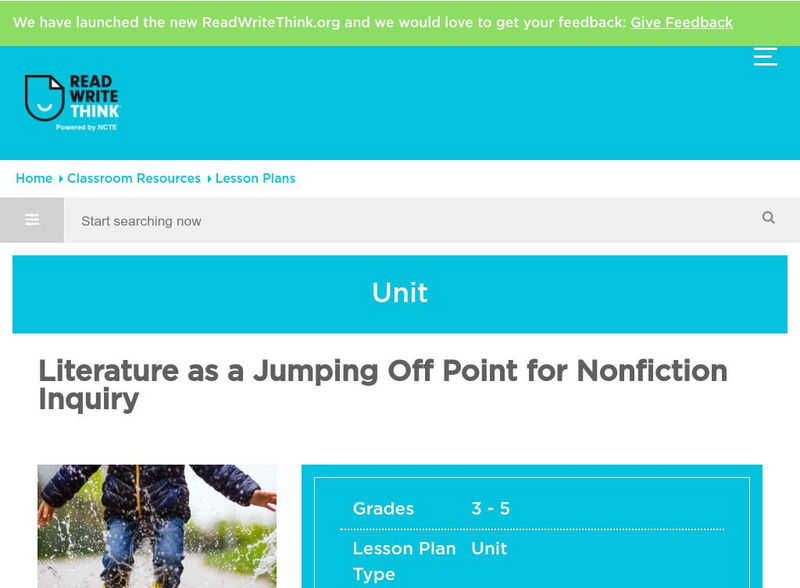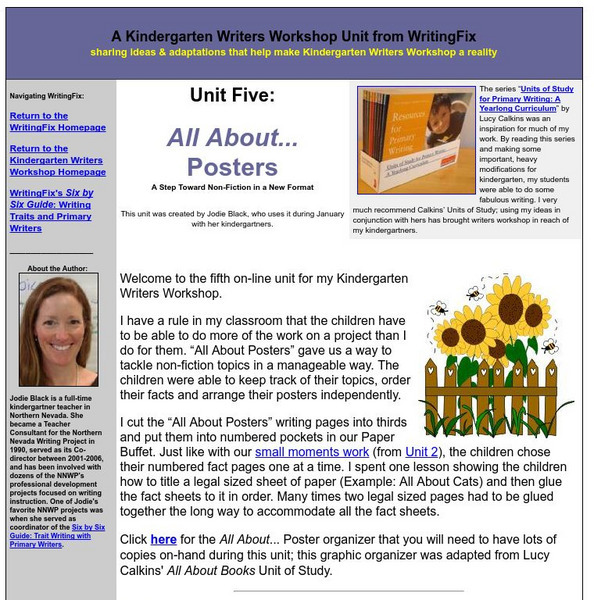Hi, what do you want to do?
New York State Education Department
TASC Transition Curriculum: Workshop 5
Are video games sports? Pupils investigate this question as well as various nonfiction selections to learn more about claims and the support that defines them. All of the selections mimic the rigor on state tests and encourage close...
Scholastic
Scholastic: Nonfiction Writing Lessons
This series of nonfiction writing lessons was developed by Stuart Miller. Four activities include: Describing the Real World, The Interview, Writing a Profile, and Writing a Review.
ReadWriteThink
Read Write Think: Blending Fiction and Nonfiction
Contains plans for four class periods that ask students to blend narrative and expository writing after reading fiction and nonfiction selections. In addition to student objectives and standards, these instructional plans contains links...
Georgia Department of Education
Ga Virtual Learning: Contemporary Literature: Contemporary Nonfiction
This lesson is an introduction to contemporary nonfiction including the definition, types of nonfiction: biographies, autobiographies, memoirs, essays, speeches, and diaries, examples of authors and types, key terms, essential questions,...
TES Global
Tes: Non Fiction Unit 4 Formal/impersonal Writing: Tourists
[Free Registration/Login Required] Students will analyze tourism brochures to determine features related to nonfiction writing in this unit. Tourism websites may be used in lieu of the brochures. Cotswold and the North Leigh Roman Villa...
Scholastic
Scholastic: Investigating Nonfiction Part 3: Independent and Guided Reading
This article provides tips for using nonfiction with guided reading and independent reading. The following strategies are shared: ways to help kids select "just right" nonfiction books; lessons to use with nonfiction in guided reading...
ReadWriteThink
Read Write Think: Using Thieves to Preview Nonfiction Texts
Contains plans for three lessons that introduce a nonfiction prereading strategy with the acronym THIEVES, which stands for Title, Headings, Introduction, Every first sentence, Visuals and vocabulary, End Questions, and Summary. In...
ReadWriteThink
Read Write Think: Animal Study From Fiction to Facts
Contains plans for five 50-minute lessons that ask young scholars to compare and research information about animals from fiction and nonfiction texts. In addition to student objectives and standards, these instructional plans contains...
Writing Fix
Writing Fix: Question and Answer Books
Beginning writers work through a Writing Workshop format to create Question and Answer books. A series of mini-lessons, graphic organizers, possible texts, and samples of student work are all provided.
Utah Education Network
Uen: Graphic Organizers Bring About Good Science Read/writing
This lesson uses graphic organizers to engage students in reading comprehension strategies for informational text in science. Venn Diagram, Hierarchy, Time Line, Cluster Diagram, and Flow Chart reproducible pages are included with the...
ReadWriteThink
Read Write Think: Comparing Fiction and Nonfiction With Little Red Riding Hood
Contains plans for nine 50-minute lessons that center around different versions of "Little Red Riding Hood." In addition to objectives and standards, this instructional plan contains links to PDF handouts and sites used in the lessons as...
Georgia Department of Education
Ga Virtual Learning: Nonfiction and Research: The Research Process: Notetaking
This lesson focuses on taking notes for your research project. It explains what to included in your notes and how to write them. It offers a link to The Quality Writing Center: "Creating and Using Outlines" and Study Guides and...
ReadWriteThink
Read Write Think: Identify, Compare, Write Nonfiction
Lesson that introduces the concepts of nonfiction to elementary students. Through reading and interactive lessons, students engage the genre of nonfiction and begin to write their own examples.
ReadWriteThink
Read Write Think: Comprehending Nonfiction Text on the Web
Contains plans for three lessons designed to improve comprehension of nonfiction, especially nonfiction texts on the web. It focuses on identifying text features, locating specific information, and generalizing that information. In...
ReadWriteThink
Read Write Think: Reading/writing About Whales Using Fiction and Nonfiction Texts
Young scholars will have a whale of a good time in this lesson in which they use fiction and nonfiction texts to write a letter to an online scientist.
ReadWriteThink
Read Write Think: Using Nonfiction for Inquiry Based Research
Contains plans for lessons that help young scholars explore the nonfiction genre by doing inquiry-based research on animals. In addition to objectives and standards, this instructional plan contains links to sites used in the lessons as...
ReadWriteThink
Read Write Think: Predicting and Gathering Information With Nonfiction Texts
Contains plans for eight short lessons that introduce nonfiction texts to second grade students. In addition to objectives and standards, this instructional plan contains links to sites used in the lessons as well as assessment and...
ReadWriteThink
Read Write Think: Literature in Nonfiction Inquiry
This lesson plan involves learners working in groups after reading a work of literature to develop text sets. Included in the lesson plan is an overview, practice, objectives, resources, preparation, and more.
ReadWriteThink
Read Write Think: Using Science Texts to Teach the Organization of Nonfiction
Contains plans for three lessons that use science textbooks to teach about the organizational features of nonfiction such as labels, captions, headings, and fonts. In addition to objectives and standards, this instructional plan contains...
ReadWriteThink
Read Write Think: Motivating Students to Read Nonfiction
This lesson plan deals with timelines in connection to nonfiction reading. Included in the lesson plan is an overview, practice, objectives, resources, preparation, and more.
ReadWriteThink
Read Write Think: Question and Answer Books From Genre Study to Report Writing
Contains plans for eight lessons that explore Question and Answer Books and ask students to do research in order to write their own. In addition to objectives and standards, these instructional plans contain links to sites used in the...
ReadWriteThink
Read Write Think: Reading Informational Texts Using the 3 2 1 Strategy
Students can count on using the 3-2-1 strategy to help them successfully comprehend and write about an informational text.
Writing Fix
Writing Fix: All About Posters
As young writers become more skilled through the Writers Workshop lessons, they can begin working to become more skilled with non-fiction writing. A series of mini-lessons, graphic organizers, and samples of student work are all provided.
Other
Seeing the World in Print Through Nonfiction
Unit plan containing five lessons designed for tenth graders. They center around reading and writing nonfiction, and they teach skills such as identifying the features of nonfiction and writing expository texts. All are aligned to...








